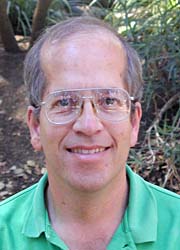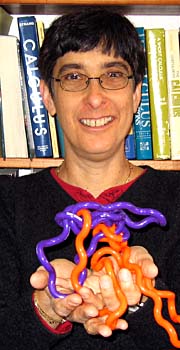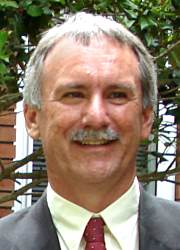Register
Deadline Tuesday, October 12. On-line registration closes at 5:00 pm.
For the Preregistration form (pdf), click here.
Click here to register on-line.
Fall 2010 SoCal-Nev Section Meeting
UC Irvine, (Directions and Map)
Saturday, October 16, 2010
Tentative Program
All talks will take place in Donald Bren Hall.
- 8:15-12:00 Registration
Outside Donald Bren Hall - 8:15-10:30 Refreshments
Outside Donald Bren Hall - 8:30-2:30 MAA Book Sale
Organized by Richard Katz and Michael Hoffman, Cal State Los Angeles - 9:00-10:00 Invited Address by Colin Adams, Williams College
Blown Away: What Knot to Do When Sailing (by Sir Randolph Bacon III, cousin-in-law to Colin Adams)
Donald Bren Hall Room 1100 - 10:00-10:15 Section Business Meeting
- 10:15-11:10 Faculty and Student Contributed Paper Sessions
Call for contributed papers
Organized by Christopher Towse, Scripps College
Donald Bren Hall Rooms 1200, 1300, 1500 and 1600 - 11:15-12:15 Invited Address by Karl Rubin, UC Irvine
Elliptic curves and Hilbert's Tenth Problem
Donald Bren Hall Room 1100 - 12:15-1:30 Luncheon
- 1:30-2:30 Invited Address by Erica Flapan, Pomona College
Recipient of the 2010 So Cal-Nev Sectional Teaching Award
Topological Symmetries of Molecules
Donald Bren Hall Room 1100 - 2:30-3:00 Refreshments
- 3:00-4:00 Invited Address by Roland Minton, Roanoke College
G.H. Hardy, Bill James, and the Mathematics of Golf
Donald Bren Hall Room 1100
Directions and Maps
The UCI website provides directions to campus, a visitor's parking map (pdf), and a campus map (also pdf).
Here is some information about hotels near UCI.
Directions to the meeting:
Enter the campus from Campus Drive and turn right onto East Peltason Drive. At Anteater Drive, turn right into the Anteater Parking Structure (labeled APS in the campus parking map). Participants will need to purchase a parking permit for $8 from the parking attendant in the structure. From the parking structure, follow the signs to Donald Bren Hall.
Register
Deadline Tuesday, October 12. On-line registration closes at 5:00 pm.
For the Preregistration form (pdf), click here.
To register on-line click here.
Registration Fees
| Registration | |
| Nonmember | $40 |
| MAA Member | $35 |
| Student | $15 |
| Registration and Luncheon | |
| Nonmember | $55 |
| MAA Member | $50 |
| Student | $25 |
On-site registration will be available for the meeting, but will be $5 more than the pre-registration charge.
Register on-line
Click here to access on-line registration, and pay by credit card.
Register by mail
Click here for a pdf of the preregistration form.
Trouble viewing the pdf?
Colin AdamsWilliams College |
Colin Adams is the Thomas T. Read Professor of Mathematics at Williams College. He received his Ph.D. from the University of Wisconsin-Madison in 1983. He is particularly interested in the mathematical theory of knots, their applications and their connections with hyperbolic geometry. He is the author of "The Knot Book", an elementary introduction to the mathematical theory of knots, co-author of the humorous supplements "How to Ace Calculus: The Streetwise Guide", and "How to Ace the Rest of Calculus: the Streetwise Guide", author of "Why Knot?", a mathematical comic book with attached toy, co-author of "Introduction to Topology: Pure and Applied" and author of the compendium of humorous math stories "Riot at the Cal Exam and Other Mathematically Bent Stories". He appears in the MAA videos "The Great Pi/e Debate" and "The United States of Mathematics Presidential Debate". A recipient of the Haimo National Distinguished Teaching Award from the Mathematical Association of America(MAA) in 1998, he was an MAA Polya Lecturer for 1998-2000, a Sigma Xi Distinguished Lecturer for 2000-2002, and the recipient of the Robert Foster Cherry Teaching Award in 2003. He is also the humor columnist for the Mathematical Intelligencer.
|

Blown Away: What Knot to Do When Sailing
by Sir Randolph Bacon III
Being a tale of adventure on the high seas involving great risk to the tale teller, and how an understanding of the mathematical theory of knots saved his bacon. No nautical or mathematical background assumed.
Karl RubinUC Irvine
|
Karl Rubin is the Thorp Professor of Mathematics at the University of California, Irvine. His research deals with elliptic curves and other aspects of number theory. Rubin was a Putnam Fellow as an undergraduate at Princeton, and received his Ph.D. from Harvard. He was a professor at Ohio State, Columbia, and Stanford before moving to UC Irvine in 2004. Rubin received the Cole Prize in Number Theory from the American Mathematical Society, a National Science Foundation Presidential Young Investigator award, a Humboldt Research Award, and Guggenheim and Sloan fellowships.
|
Elliptic curves and Hilbert's Tenth Problem
An elliptic curve is a curve defined by a cubic polynomial in two variables. The rank of an elliptic curve is a measure of the number of solutions of the equation that defines the curve. Recently Bjorn Poonen found a surprising connection between ranks of elliptic curves and Hilbert's Tenth Problem (Hilbert's Tenth Problem asks for an algorithm to decide the solvability of polynomial equations). In this lecture we will introduce elliptic curves and some of the fundamental questions about them, and describe some recent joint work with Barry Mazur and its application to Hilbert's Tenth Problem.
Erica Flapan
Teaching Award Recipient

|
Erica Flapan received her PhD from the University of Wisconsin in 1983. She was a post-doc for two years at Rice University and for one year at UCSB. She joined the faculty at Pomona College in 1986. Since 2006, she has been the Lingurn H. Burkhead Professor of Mathematics at Pomona College. In addition to teaching at Pomona, Flapan has been teaching at the Summer Mathematics Program for Women at Carleton College since 2000. She has done research in knot theory and the study of 3-manifolds. She is also one of the pioneers of the study of the topology of graphs embedded in 3-space, and has published extensively in this area and its applications to chemistry and molecular biology. In addition to her research papers, she has published three books. The first, entitled ``When Topology Meets Chemistry" was published jointly by the MAA and Cambridge University Press. The second book entitled ``Applications of Knot Theory," Flapan co-edited with Dorothy Buck. Most recently, she co-authored a textbook entitled ``Number Theory: A Lively Introduction with Proofs, Applications, and Stories" with James Pommersheim and Tim Marks. |
Topological Symmetries of Molecules
Chemists have defined the point group of a molecule as the group of rigid symmetries of its molecular graph in R^3. While this group is useful for analyzing the symmetries of rigid molecules, it does not include all of the symmetries of molecules which are flexible or can rotate around one or more bonds. To study the symmetries of such molecules, we define the topological symmetry group of a graph embedded in R^3 to be the subgroup of the automorphism group of the abstract graph that is induced by homeomorphisms of R^3. This group gives us a way to understand not only the symmetries of non-rigid molecular graphs, but the symmetries of any graph embedded in R^3. The study of such symmetries is a natural extension of the study of symmetries of knots. In this talk we will present a survey of results about the topological symmetry group and how it can play a role in analyzing the symmetries of non-rigid molecules.
Roland MintonRoanoke College
|
Roland Minton is Professor of Mathematics and Chair of the Department of Mathematics, Computer Science and Physics at Roanoke College, where he has taught since 1986. He has a PhD in mathematical sciences from Clemson University, home of the 2003 NCAA golf national champions. He has taught every mathematics course in the Roanoke College catalog, but primarily teaches calculus. He and Bob Smith have written a series of calculus books for McGraw-Hill. The fourth editions are in production, and have been translated into several languages. He is finishing up a book on the mathematics of golf. An article co-authored with Tim Pennings for The College Mathematics Journal titled “Do Dogs Know Bifurcations?” won the 2008 George Polya Award for mathematical exposition. He received a Virginia Outstanding Faculty Award from the governor in 2005. |
GH Hardy, Bill James, and the Mathematics of Golf
An overview of several topics from the mathematics of golf will be presented. A simple conceptual model introduced by GH Hardy explores the importance of consistency in golf and illuminates a poorly understood aspect of the golf handicap system. Oddly enough, JE Littlewood also contributed to the mathematics of golf; his analysis of a lip-out will be discussed. The detailed statistics available from the ShotLink system should allow us to do for golf what Bill James did for the analysis of baseball statistics. Several simple examples will be provided, focusing on the dominance of Tiger Woods from 2004 to 2009.Call for Contributed Papers
Faculty and students (undergraduate and graduate) are invited to submit short proposals for 15-minute talks in the Contributed Paper Session of the Fall Meeting. All topics will be considered. The selection of talks will be based on interest to expected audience and on scheduling constraints.
Submissions for all contributed papers should contain a title, an abstract (not to exceed one-half page and suitable for inclusion in the conference program), the desirable mathematical background of the audience, and any special presentation display needs other than an overhead projector.
Ideally abstracts should be submitted in LaTex format, with an accompanying PDF file. If you do not use LaTex, please simply submit a PDF.
Please email all submissions to Christopher Towse at christopher.towse@scrippscollege.edu. The submission deadline is Friday, October 1, 2010.
